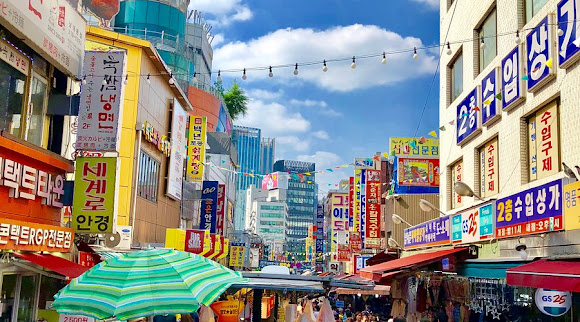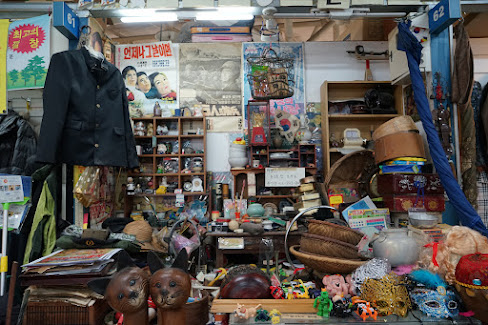😀😀😊 한국의 대형 전통시장 TOP 10: 살아 숨 쉬는 한국의 역사와 문화
전통시장은 한국의 오랜 역사와 문화를 고스란히 간직한 공간이다. 현대화가 빠르게 진행되는 와중에도 여전히 많은 이들에게 친숙한 장소로 남아 있으며, 다양한 먹거리와 생활용품, 그리고 사람들의 온정이 넘치는 곳이기도 하다. 지금부터 한국을 대표하는 대형 전통시장 10곳을 소개하며, 그 매력과 특징을 살펴보자.
Top 10 Traditional Markets in Korea: A Living History and Culture
Traditional markets in Korea are spaces that preserve the country’s long history and culture. Despite rapid modernization, these markets remain familiar places for many people, offering a variety of foods, daily necessities, and warm interactions. Let’s explore the top 10 representative traditional markets in Korea and their unique charms.
1. 남대문시장 (서울)
한국에서 가장 오래된 전통시장 중 하나로, 600년 이상의 역사를 자랑한다. 다양한 의류, 식품, 기념품 등을 저렴한 가격에 구입할 수 있으며, 24시간 운영되는 점포도 많아 언제든 방문하기 좋은 곳이다. 특히 갈치조림, 호떡, 칼국수 등 맛집이 많아 미식가들에게 사랑받는다.
1. Namdaemun Market (Seoul)
One of the oldest traditional markets in Korea, Namdaemun Market boasts over 600 years of history. Visitors can purchase a wide range of clothing, food, and souvenirs at affordable prices. Many stores operate 24/7, making it a convenient place to visit at any time. It is also a paradise for food lovers, offering delicacies such as braised cutlassfish, hotteok (Korean sweet pancakes), and kalguksu (handmade noodle soup).
2. 동대문시장 (서울)
패션의 중심지로 불리는 동대문시장은 의류, 원단, 액세서리 등을 저렴하게 구입할 수 있는 곳이다. 대형 쇼핑몰과 함께 밤에도 활기찬 분위기를 유지하며, 국내외 패션업계 종사자들이 자주 찾는다. 또한 동대문시장 인근에는 다양한 길거리 음식들이 즐비하여 관광객들에게 인기가 많다.
2. Dongdaemun Market (Seoul)
Known as the fashion hub of Korea, Dongdaemun Market offers affordable clothing, fabrics, and accessories. It maintains a vibrant atmosphere even at night, attracting domestic and international fashion industry professionals. The surrounding area is also filled with street food vendors, making it a must-visit destination for food enthusiasts.
3. 광장시장 (서울)
100년 이상의 역사를 지닌 광장시장은 특히 먹거리로 유명하다. 빈대떡, 육회, 마약김밥 등 전통 음식을 맛볼 수 있으며, 한국의 옛 정취를 느낄 수 있는 곳이기도 하다. 서울을 방문하는 외국인 관광객들에게도 필수 코스 중 하나로 꼽힌다.
3. Gwangjang Market (Seoul)
With a history of over 100 years, Gwangjang Market is renowned for its food. Visitors can enjoy traditional Korean dishes such as bindaetteok (mung bean pancakes), yukhoe (Korean-style beef tartare), and mayak gimbap (small-sized seaweed rice rolls). The market’s old-world charm makes it a favorite spot for both locals and international tourists.
4. 경동시장 (서울)
한약재와 농산물을 전문적으로 취급하는 시장으로, 한국 최대 규모의 한약재 시장이다. 건강식품, 신선한 과일과 채소를 저렴하게 구입할 수 있으며, 한국 전통 의약문화를 경험할 수 있는 특별한 장소다.
4. Gyeongdong Market (Seoul)
Specializing in herbal medicine and agricultural products, Gyeongdong Market is the largest herbal medicine market in Korea. It offers various health foods, fresh fruits, and vegetables at affordable prices. The market provides a unique opportunity to experience Korea’s traditional medical culture.
5. 부평깡통시장 (부산)
부산을 대표하는 시장 중 하나로, 국제시장과 가까운 거리에 위치해 있다. 다양한 수입 상품과 먹거리로 유명하며, 특히 야시장이 활성화되어 있어 밤에도 활기찬 분위기를 자랑한다. 부산 오뎅, 씨앗호떡, 떡볶이 등 길거리 음식이 인기가 많다.
5. Bupyeong Kkangtong Market (Busan)
One of Busan’s representative markets, Bupyeong Kkangtong Market is located near the International Market. It is famous for imported goods and street food, with an active night market that keeps the area lively. Popular street foods include Busan-style fish cakes, seed hotteok, and spicy rice cakes.
6. 국제시장 (부산)
6.25 전쟁 이후 형성된 시장으로, 전국 각지의 다양한 상품이 모이는 곳이다. 의류, 공예품, 기념품 등이 많아 쇼핑을 즐기기에 좋으며, 시장 골목골목에서 한국의 근현대사를 느낄 수 있다. 영화 ‘국제시장’의 배경이 된 곳이기도 하다.
6. Gukje Market (Busan)
Formed after the Korean War, Gukje Market gathers a wide range of products from all over the country. It is an excellent place for shopping, offering clothing, crafts, and souvenirs. The market is also historically significant, as it was the setting of the famous Korean movie Ode to My Father (2014).
7. 자갈치시장 (부산)
한국 최대의 수산시장으로, 신선한 해산물을 저렴한 가격에 구입할 수 있는 곳이다. 특히 횟집과 해산물 음식점이 많아, 싱싱한 회와 해산물을 맛보기에 제격이다. 부산의 바다 내음을 물씬 느낄 수 있는 곳으로 관광객들에게도 인기가 많다.
7. Jagalchi Market (Busan)
As Korea’s largest seafood market, Jagalchi Market offers fresh seafood at reasonable prices. Many restaurants in the area serve sashimi and seafood dishes, allowing visitors to experience the flavors of the ocean. This market captures the essence of Busan’s maritime culture and is a popular destination for tourists.
8. 서문시장 (대구)
대구를 대표하는 전통시장으로, 섬유·패션 관련 상품이 풍부하다. 야시장도 활성화되어 있으며, 납작만두, 호떡, 막창 등 대구의 특색 있는 음식을 즐길 수 있는 곳이다. 한국 3대 전통시장 중 하나로 꼽힐 만큼 규모가 크고 역사도 깊다.
8. Seomun Market (Daegu)
One of Daegu’s most famous traditional markets, Seomun Market is well-known for its textiles and fashion-related products. It also has a vibrant night market featuring local specialties such as flat dumplings, hotteok, and grilled pork intestines. As one of Korea’s three major traditional markets, it boasts a rich history and large scale.
9. 풍물시장 (서울)
전통 공예품, 골동품, 민속품 등을 판매하는 시장으로, 한국의 전통문화에 관심 있는 이들에게 추천하는 장소다. 다양한 전통놀이 체험과 공연도 종종 열려 관광객들에게 인기가 높다.
9. Pungmul Market (Seoul)
Pungmul Market specializes in traditional handicrafts, antiques, and folk goods, making it an ideal place for those interested in Korean traditional culture. Various cultural performances and activities are often held, attracting both locals and tourists who want to experience Korea’s heritage.
10. 신창시장 (광주)
광주의 대표적인 전통시장으로, 싱싱한 농산물과 다양한 길거리 음식으로 유명하다. 특히 광주 특유의 음식 문화가 살아 있는 곳으로, 광주식 국밥과 떡갈비 등을 맛볼 수 있다.
10. Sinchang Market (Gwangju)
A representative traditional market in Gwangju, Sinchang Market is famous for its fresh agricultural products and street food. It highlights the unique food culture of Gwangju, offering delicacies such as Gwangju-style rice soup and grilled short rib patties.
마무리하며
한국의 전통시장은 단순히 물건을 사고파는 공간을 넘어, 사람과 사람 사이의 정을 나누고 한국의 문화를 경험할 수 있는 소중한 공간이다. 전통시장을 방문하면 한국인의 삶과 정서를 더욱 깊이 이해할 수 있으며, 맛있는 음식과 따뜻한 분위기를 함께 즐길 수 있다. 시간이 된다면 위에서 소개한 대형 전통시장들을 직접 방문해보고, 한국의 정취를 온몸으로 느껴보길 바란다.
Conclusion
Korea’s traditional markets are more than just places for buying and selling goods—they are spaces where people connect and where the country’s culture is deeply rooted. Visiting these markets offers insight into the daily lives of Koreans, while also allowing visitors to enjoy delicious food and a warm atmosphere. If you have the chance, explore these large traditional markets and immerse yourself in the authentic charm of Korea.















































.jpg)
).jpg-1.jpg)
.jpg)
.jpg)
.jpg)
.jpg)
.jpg)
